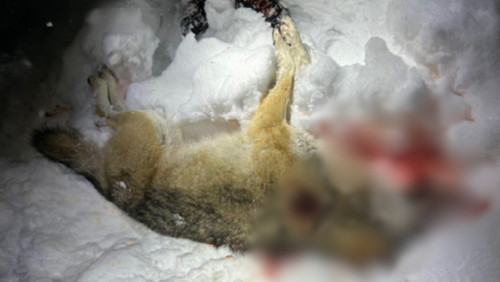English
The population of these animals may become extinct. This is the result of illegal hunting in Norway

The wolf population is just one of those threatened with extinction. Fot. Økokrim
The wolf population in southern Scandinavia has been experiencing an alarming decline for four years. Norwegian police are receiving more and more reports of illegal hunting of protected predator species, which are key to maintaining the country's biodiversity. At the same time, entire wolf packs in the Norwegian-Swedish border region are disappearing without a trace. Investigators are conducting extensive investigations targeting groups of hunters.
According to the latest data from March 2025, there are between 57 and 64 wolves living in Norway, of which only 39-46 individuals reside exclusively on Norwegian territory. This is a decrease compared to the previous year, when 78-80 wolves were recorded, and compared to 2023, when the population numbered 125-129 individuals. On the Swedish side of the border, the situation is dramatic – in two years, the wolf population dropped from 130 to 45 individuals.
Dramatic situation of predator populations
Similarly severe losses affect other protected species. Four out of five predator species in Norway – wolf, wolverine, brown bear, and lynx – are threatened with extinction. In the case of bears, of which there are just under 200 individuals in Norway, the National Nature Inspectorate estimates that at least half of the 68 bears registered in the Troms district between 2006 and 2023 were killed illegally. Many Norwegian bears that disappeared were later found dead in Sweden.
Closed hunting communities with local support
Previous investigations reveal that hunting communities form closed circles that are difficult for the police to access. Illegal activities enjoy significant support in local communities, where residents provide hunters with information about sightings of wolves and other predators.
A study conducted by the Predator Center in 2020 showed that 2 out of 10 hunters would not report to the authorities if a fellow hunter illegally shot a wolf, but would handle the matter themselves or not take any action at all.
A study conducted by the Predator Center in 2020 showed that 2 out of 10 hunters would not report to the authorities if a fellow hunter illegally shot a wolf, but would handle the matter themselves or not take any action at all.
The motivations of the perpetrators are varied – from wanting to protect their own livestock, hunting dogs, or game, to disagreeing with predator protection policies, to the desire to obtain a new trophy. In the land of fjords, some farmers express a strong desire for easier culling of protected white-tailed and golden eagles, arguing that the birds kill lambs and reindeer calves, especially in the Nordland region.
International dimension of the problem and unprecedented legal consequences
The problem of illegal hunting of predators has an international dimension. In May 2025, 26 hunters in Finland were convicted for illegal hunting of endangered species, including wolves, wolverines, lynxes, and birds of prey. The leader of the group, a man in his 60s, received the harshest sentence – one and a half years in prison and a three-year hunting ban. In the same case, 250 firearms were confiscated.
The Supreme Court in Norway has unequivocally stated that unconditional imprisonment is the starting point for illegal hunting of fully protected predators – wolves, bears, and wolverines. Authorities remind that illegal hunting makes it difficult for nature protection agencies to manage populations, as unauthorized culling makes it hard to assess the effectiveness of management measures, such as pest control or preventive measures against damage to livestock and reindeer.
The Supreme Court in Norway has unequivocally stated that unconditional imprisonment is the starting point for illegal hunting of fully protected predators – wolves, bears, and wolverines. Authorities remind that illegal hunting makes it difficult for nature protection agencies to manage populations, as unauthorized culling makes it hard to assess the effectiveness of management measures, such as pest control or preventive measures against damage to livestock and reindeer.
Every individual killed illegally can be crucial for the survival of the species. Population targets for predators in Norway are set so low that they provide little genetic diversity or ecological function for the species as apex predators.
Dodaj komentarz
Wyślij


